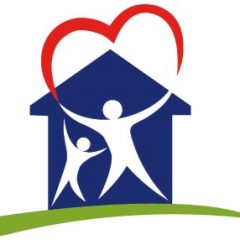By Addie Geitner, Environmental Research Assistant
 Donna Coleman is a Senior Housing Rehabilitation Officer at the North Carolina Housing Finance Agency (NCHFA). Within NCHFA, Donna works in the home ownership department managing cases for the Essential Single Family Rehabilitation Loan Pool (ESFR) and the Urgent Repair Program (URP).
Donna Coleman is a Senior Housing Rehabilitation Officer at the North Carolina Housing Finance Agency (NCHFA). Within NCHFA, Donna works in the home ownership department managing cases for the Essential Single Family Rehabilitation Loan Pool (ESFR) and the Urgent Repair Program (URP).
Donna has always had an interest in improving people’s health and safety by addressing issues within their built environment. She graduated from North Carolina State University with a degree in architecture and went on to become a licensed architect during her 11 years at the architecture firm of Smith-Sinnett Associates (now Smith-Sinnett Architecture).
As a project architect, she often worked on projects that dealt with schools and military housing. Donna recalls going into the attics of military buildings in the 1980’s to collect asbestos samples with little more than a medical mask and light protective suit, as that was the protocol at the time.
Working closely with toxins in schools and housing in the early years of their recognition (the EPA issued the Asbestos Ban and Phase-Out Rule five years into her time at Smith-Sinnett) furthered Donna’s desire to work in the public service sector.
“At some point in the early 90s, I realized that a lot of the products our firm was specifying for new schools were actually problematic for the kids,” she says.
“Prior to this realization I was really proud of my design work for schools, because I felt like I was helping kids get into an environment where they can learn and be happy. After my realization and several years of encouragement from the firm to pursue “green building” but never getting real change in our specifications, I left in 1995 to pursue green building design full time.”
Donna became a minority business owner by starting her own firm and staying busy for six years, during which time she concurrently pursued her interest in the budding green building movement, sowing the seeds of sustainable design throughout Chatham and Wake counties with projects ranging from schools to organic farms.
As her firm grew, Donna knew she did not want to sacrifice the green design and public service elements of her job to become a “businesswoman,” so she switched gears and took a position at her Alma mater.
At NC State University’s Solar Center (now NC Clean Technology Center), Donna was now required to continue pursuing her passion to help people live healthy lives by consulting with and teaching professionals about passive solar design, energy efficiency and material toxicity, among other topics. She traveled across the country helping groups like the National Association of Homebuilders and the US Green Building Council create their green building programs and establish green building standards.
Additionally, she wrote grants to found, develop and build a staff to create the first statewide green building certification program in the US in 2003, NC HealthyBuilt Homes. This program (along with several other programs at the Solar Center) was forced to close following legislative budget cuts in 2011, but the basic content of the program continues today in a certification program run by The GreenBuilt Alliance in Asheville, NC.
In 2012 while searching for a new, public-service-focused job “I came to the realization that I never wanted to be a “new building” architect again, because I felt like rehabilitation, renovation, and a focus on dealing with the vast embodied energy of existing construction was the way we as a society should go.”
Donna found just the type of work to fit this description in 2013 and joined the NC Housing Finance Agency as a Community Development Coordinator. She now serves as one of four housing rehabilitation officers managing cases for the Urgent Repair Program (URP) and the Essential Single-Family Rehabilitation Loan Pool (ESFR) which she also coordinates.
The programs provide funding for single-family homeowners, meaning multi-family and rental housing situations are excluded, although other NCHFA teams administer programs for those sectors. Homeowners must apply and meet both the income eligibility requirements (below 80%-ESFR or 50%-URP of area median income) and demonstrate at least one other ‘special need’. This includes but is not limited to homeowners who are veterans, elderly, disabled, or have a child under the age of 6 threatened by potential lead in the home.
Despite the narrow criteria, these two programs still efficiently and effectively provide needed funds to hundreds of projects each year.
They tend to deal largely with elderly NC citizens, who make up many of the low-income homeowners. Though the discussion around lead exposure’s effects currently and appropriately centers largely around children, studies are beginning to show the possible links between lead exposure and dementia, furthering the need for rehabilitation programs like ESFR and URP to assist older homeowners.
After the aforementioned qualifying criteria, the missions of the two programs diverge.
URP is the simpler of the two and is funded using Housing Trust Fund money from the state of North Carolina. Among other issues, the program is helpful for addressing roof, HVAC system, unstable flooring and egress issues, as well as small toxicity cleanups up to $12,000 in URP22.
Designed to address urgent home issues efficiently, URP projects only need to have the work paid for by URP meet the NC Residential Building Code, as opposed to higher whole-house health and safety standards like those set by the Department of Housing and Urban Development (HUD). Likewise, URP can be less ideal for addressing large issues of toxicity, the guidelines for which are often included in more stringent standards.
ESFR is a bit more comprehensive and is funded using HUD HOME funds. It is more complex, but also more widely useful when it comes to assisting homes that have toxicity or “healthy home” issues. Homes that receive ESFR funding must be brought up to Property Standards developed by NCHFA based mainly on HUD standards with some energy efficiency, indoor air quality and other low-cost “healthy home” measures; likewise, the program has a larger funding base (up to $40,000 in hard costs for ESFR22) to allow each project to meet these standards.
The soft cost budget ($10,000) pays for specific Property Standard requirements such as radon testing on every home, lead testing on every home built before 1978, and asbestos testing for any home where an asbestos risk exists.
Donna can point to many ways her current role has allowed her to simultaneously contribute to the health and well-being of North Carolinians and use the skills she acquired in her years of architectural work to the benefit of others.
As one of a handful of employees at NCHFA with construction expertise, Donna enjoys getting “down in the dirty details of a work scope or out in the field inspecting homes”.
She relishes the moments she gets to whip out a pen and sketch a solution or research a construction detail. “Talk about geeky,” she laughs, “I just love that kind of stuff.”
Additionally, Donna is always excited to tell someone they won funding. “You can’t get over that— ‘Oh, guess what? We’re giving you a couple hundred thousand dollars to do this in your county’ –that’s fun.” Donna also enjoys talking to homeowners after a project is finished and seeing the tangible impacts the funding has made on their lives. She says, “That’s the most fulfilling part.”
Donna acquired the role of NCHFA representative within the NC Lead and Healthy Homes Outreach Task Force from her boss, who was the previous liaison, as he knew by her background that she would bring a lot to the table. When Donna was introduced to the Task Force, she was excited to see another organization stress the tie between homes and health.
“I believed health was the whole point in the late nineties, early 2000s of the green building movement,” she recalls.
Donna has been interested in the environment from a young age. In a widely compelling defense for both environmental protection and the work she is involved in, she says of herself, “I’m always telling people that I’m not a tree hugger, I’m a people hugger. The reason I want to do all this environmental and green and healthy building stuff is because I believe in people sticking around. I think the earth will be just fine without us, but we need to figure out a way to keep us here.”

